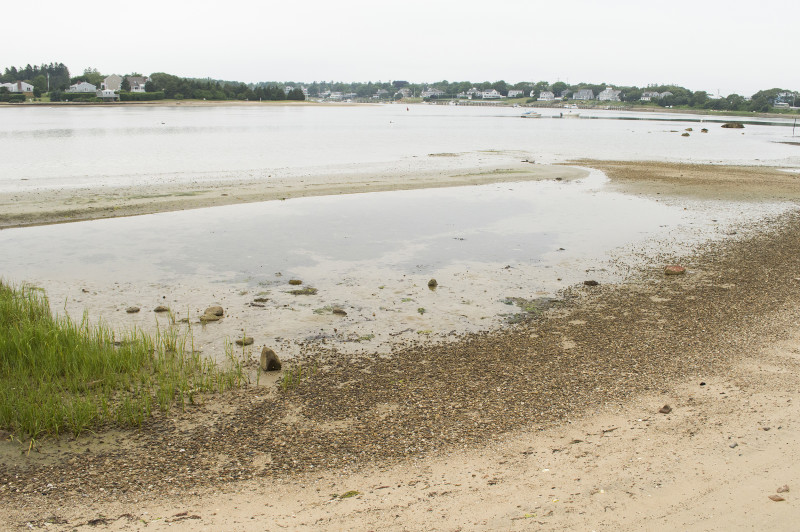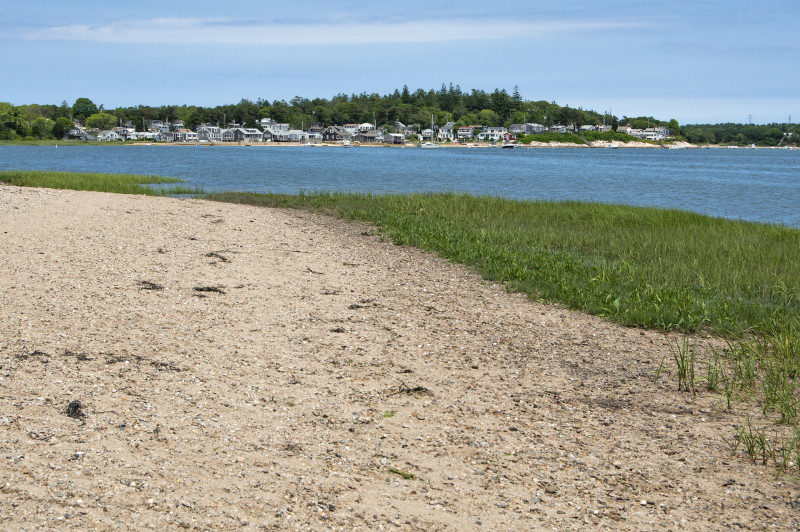Upper Bay towns are coming together to restore clean water in Buzzards Bay
All across the Buzzards Bay region, towns and cities are making a difference to reduce pollution from wastewater and septic systems. From Westport to Falmouth, many communities are doing their part at the local level to protect the Bay’s waterways. But the scale of the nitrogen pollution problem is huge and demands even bolder action from municipalities.

A unique new project is bringing together three Buzzards Bay towns – Wareham, Bourne, and Plymouth – and the Massachusetts Maritime Academy to tackle nitrogen pollution in the upper portion of the Bay.
Now, a unique new project is bringing together three Buzzards Bay towns – Wareham, Bourne, and Plymouth – and the Massachusetts Maritime Academy to tackle nitrogen pollution in the upper portion of the Bay. The project is awaiting approval of a grant from the EPA-funded Southeast New England Program, which promotes and develops innovative, effective approaches to protect and restore waterways from Rhode Island to Cape Cod, including Buzzards Bay.
Through a first-of-its-kind collaboration, these four partners are combining their resources to achieve a common goal: clean water in upper Buzzards Bay.
How is the health of the upper Bay’s waterways?
If you ever swim, paddle, or fish in one of the upper Bay’s waterways – like the Agawam River, the Wareham River, Buttermilk Bay, or Little Buttermilk Bay – then you’ve probably noticed how the water has changed in the past decade. Nitrogen pollution from wastewater and septic systems has turned the water cloudy and murky, with patches of algae mucking up beaches and boat hulls.
This pollution isn’t just ugly to look at. It also affects fish, crabs, and quahogs that call Buzzards Bay home. Without healthy habitat, these animals can’t survive in our local bays and rivers. Some of the Bay’s largest historical losses of eelgrass – the main underwater habitat for young fish, crabs, and bay scallops – have been observed in the Wareham River and Buttermilk Bay.
The Coalition’s Bay Health data clearly shows this story through science. None of these four waterways scores better than a middling “fair” on the Bay Health Index, an annual measure of the health of Buzzards Bay’s waterways. Even worse, all four waterways fail to meet the state’s standards for water quality and are officially listed as impaired.
“Buzzards Bay’s towns depend on clean, healthy water to support their local economies and quality of life,” said Korrin Petersen, the Coalition’s senior attorney. “We have to do better than fair water quality in Buzzards Bay.”
To help clean up the Agawam River, in 2004 Wareham upgraded its wastewater treatment plant, which currently discharges treated wastewater to the Agawam. That upgrade helped the Agawam’s dismal health climb from poor to fair over the past 10 years.
But to fully restore the upper Bay’s waterways, more progress needs to be made.
How will this project help improve nitrogen pollution problems in the upper Bay?

This project will help improve the health of upper Buzzards Bay waterways like Buttermilk Bay by reducing nitrogen pollution from septic systems.
“All of these towns have a collective need to solve the nitrogen pollution problem,” said Petersen about Wareham, Plymouth, and Bourne, the three towns that have come together along with Mass Maritime to apply for this grant. “This project is a win-win for everybody.”
Wastewater is the biggest source of nitrogen pollution to Buzzards Bay. In Wareham, the town’s upgraded wastewater treatment plant is the most advanced in the region, with special controls that reduce far more nitrogen than most other sewer plants. By coming together across town lines, the three communities of Wareham, Bourne, and Plymouth can take advantage of a system that treats wastewater to the best level possible.
Currently, the Wareham sewer plant still discharges its treated sewage into the Agawam: a small, relatively shallow river that’s far from the Bay’s open waters. By moving this discharge pipe from the Agawam to a less sensitive location at Massachusetts Maritime Academy, all three towns could expand sewer lines to neighborhoods that are currently served by septic systems and cesspools, which contribute a significant amount of nitrogen to impaired waterways like Buttermilk Bay and Little Buttermilk Bay.
The Massachusetts Maritime Academy’s participation is what makes this project truly unique. The academy operates a wastewater treatment plant on campus. But unlike Wareham’s advanced sewer plant, the one at Massachusetts Maritime doesn’t treat for nitrogen at all. By connecting Mass Maritime to the Wareham sewer plant, the school can save money on wastewater costs in the future.
Under the project, the Coalition is leading efforts to increase monitoring of the waters around Massachusetts Maritime to help determine how any new nitrogen might affect the upper Bay. We’re deploying a new monitoring buoy like the Center Bay Buoy (located south of West Island) and training cadets to collect data.
Perhaps most importantly, this unique regional partnership will serve as a model for other communities grappling with the same nitrogen pollution problems.
“Nitrogen pollution doesn’t recognize municipal boundaries,” said Petersen. “If funded, this project will showcase a successful relationship aimed at common solutions to nitrogen pollution.”
The Southeast New England Program will announce this year’s grant recipients in mid-December.